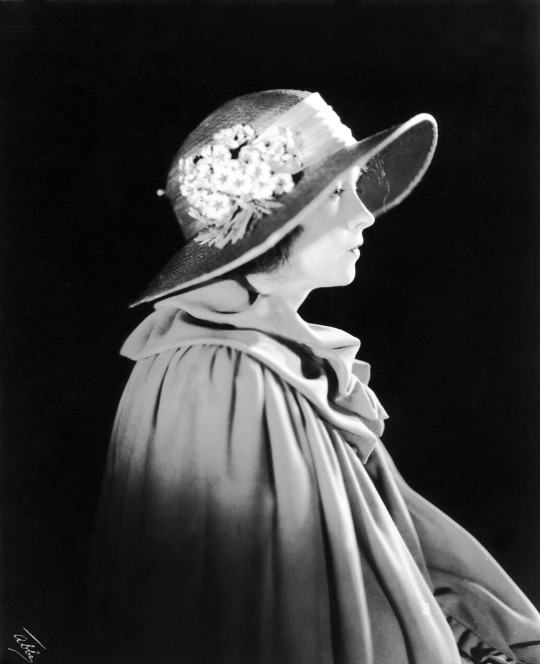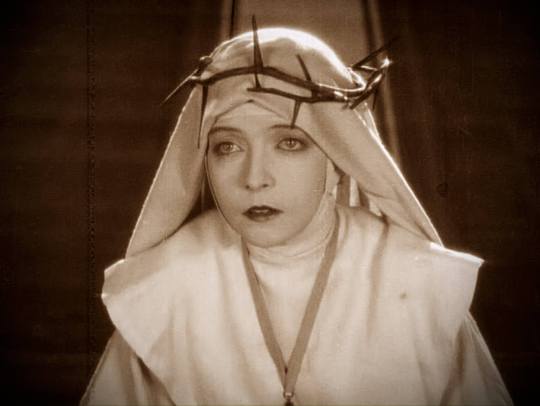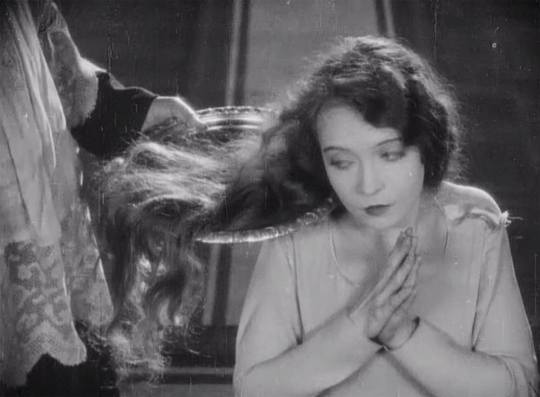#The White Sister
Explore tagged Tumblr posts
Text

3 notes
·
View notes
Text

Promotional photograph for the 1923 film "The White Sister"
#He looks so cute for some reason#Look at that silly smirk#ronald colman#old hollywood#silent films#1920s#The white sister#Classic hollywood#Vintage postcard#Vintage
7 notes
·
View notes
Text

Lillian Gish photographed by Abbe as seen in the October 1923 issue of Picture Play Magazine
Caption: This glimpse of one of the early scenes in "The White Sister," Lillian Gish's first picture for the Inspiration company, holds rare promise of beauty, for it seems to have caught in its very backgrounds her ephemeral charm.
#lillian gish#1920s#1923#Picture Play Magazine#movie magazine#film magazine#The White Sister#silent era#silent movies#silent film#classic movies#classic film
61 notes
·
View notes
Photo

Lillian Gish - in The White Sister-1923 - director Henry King - novel Francis Marion Crawford - portrait by James Abbe - Inspiration-Pictures-Metro-Pictures-Corporation
28 notes
·
View notes
Text

The White Sister, 1923.
2 notes
·
View notes
Text

Lillian Gish in The White Sister (Henry King, 1923)
Cast: Lillian Gish, Ronald Colman, Gail Kane, J. Barney Sherry, Charles Lane, Juliette La Violette, Gustavo Serena. Screenplay: George V. Hobart, Charles E. Whittaker; titles: Will M. Ritchey, Don Bartlett; based on a novel by Frances Marion Crawford and a play by Crawford and Walter C. Hackett. Cinematography: Roy F. Overbaugh. Art direction: Robert M. Haas. Film editing: Duncan Mansfield.
Henry King was a director of solid competence whose career extended from 1915 to 1962, amassing credits on IMDb for directing 116 films. Even so, his movies are not particularly memorable. Who, today, seeks out The Song of Bernadette (1943) or Wilson (1944), two of the "prestige" films he directed for 20th Century-Fox? In his great auteurist survey The American Cinema: Directors and Directions, 1929-1968, the best Andrew Sarris has to say about the movies directed by King is that they display a "plodding intensity." King was, in Sarris's words, "turgid and rhetorical in his narrative style," and that certainly holds true for The White Sister. Lillian Gish had a great rapport with the camera, able to suggest an entire range of emotions with her eyes alone -- hence the many close-ups she is given in her films. But King, filming on location in Italy and Algeria, is more interested in the settings than in the people inhabiting them. (Roy Overbaugh's cinematography is one of the film's virtues.) Nor does he seem interested in moving the story along, dragging it out to a wearisome 143 minutes. When Prince Chiaromonte (Charles Lane), the father of Angela (Gish) and her wicked half-sister, the Marchesa di Mola (Gail Kane), goes out fox-hunting, we're pretty sure that disaster is about to happen. But King stretches out the hunt so long that when Chiaromonte is killed the accident has no great emotional impact. And when Angela takes her vows as a nun, effectively preventing her from marrying Captain Severini (Ronald Colman), the man she loves but thinks is dead, King gives us every moment of the ceremony, trying to generate suspense by occasional cuts to Severini's ship steaming homeward. There's also an erupting volcano at the picture's end, but King fails to stage or cut it for real suspense. Gish is fine as always, though she's not called on to do much but look pious and to go cataleptic when Angela receives the news of Severini's supposed death. Colman is handsome but not much else, and Kane's villainy seems to be signaled by her talking out of the side of her mouth, as if channeling Dick Cheney many years in advance.
4 notes
·
View notes
Text

Turnabout Sisters
16K notes
·
View notes
Text
swordtember day 20: fragmented

#zheng yang was fun to draw#underappreciated sword because her younger sister is edgier (xin mo)#swordtember#swordtember 2024#svsss#svsss fanart#scum villain’s self saving system#shen qingqiu#luo binghe#white lotus luo binghe#bingqiu
3K notes
·
View notes
Text
The White Sister (1923): Lillian Gish's leap of faith
This is a guest post for Silent London by James Patterson. In a 1909 Los Angeles Times review of F. Marion Crawford’s novel The White Sister, the critic noted that Crawford (1854-1909) was “a greater favourite” in Europe “than any other American”. (1) The book is about a young woman who upon learning her fiancé is killed on a foreign mission, enters a convent to become a hospital nun. According…

View On WordPress
1 note
·
View note
Text

team says happy holidays!
#genshin impact#kaeya#kaveh#alhaitham#barbara#haikaveh#kaeveh#fiances their boyfriend and their little white sister
2K notes
·
View notes
Text










#girlblogging#coquette dollete#white coquette#doll core#coquette winter#coqeutte#snow aesthetic#snow girl#snow angel#cinnamon girl#manic pixie dream girl#hell is a teenage girl#lana del rey#girl blogger#this is a girlblog#lana del ray aka lizzy grant#so lana del rey vinyl#lana del ray aesthetic#lizzy grant aesthetic#girl interrupted#girlblog interrupted#sofia coppola#the virgin suicides#kristen dunst#lux lisbon#lisbon sisters#pricilla movie
1K notes
·
View notes
Text
You know, it's genuinely sad to me that aging favourite character actors no longer have any fun murder-mystery tv shows to guest-star as murders on.









#murder she wrote#matlock#diagnosis murder#father dowling mysteries#agatha christie’s poirot#columbo#quincy ME#ironside#perry mason#there are a few others#yes i know there are murder mystery shows on now#but i'm talking specifically about the silly old fashioned ones that have guest stars as murders who used to be quite famous#and yes I know they have rebooted several of these buy none of them are watchable#but that is a whole lot of white people#still fun shows tho that had fun guest stars#yes yes I’ve seen the hallmark movies they are awful and usually don’t have good guest stars#and whilst i love these shows there are way too many white people#I just wanna see old people on tv drinking tea or eating chilli and chasing after murderers.#Perry mason was actually quite young. I want someone over 50 or 60 at least.#and give me more older people with disabilities. I wanna see canes and wheelchairs.#yes the nun in father dowling played a nun in#sister act#but Perry mason was brought back when he was older so he still counts.#yes I’ve seen poker face and it’s good. but I want older people on my screen.#yes I've seen father brown. no
1K notes
·
View notes
Text





#animated gif#animated gifs#gif#gifs#retro#vhs#circus act#flip sister#circus#black and white#stunts#flips#hey asshole do a flip!#40s#Whee!
1K notes
·
View notes
Text

The White Sister
There is a lyric quality to Lillian Gish’s acting in “The White Sister” (Inspiration) which has never been recognized before. In that respect Henry King who directed this tragic story of broken romance has brought forward a talent which Griffith neglected in order to create an emotional outburst, of pent-up floods of passions and fear. As the frail, tender misguided child of fate, Miss Gish makes poignant appeal. It is heart-rending to see this tormented soul taking her separation from her lover with such courage and when learning of his death, turning her back on the world and finding peace and sanctuary in the Church.
There is a splendid clash of emotions when the girl takes the veil - an unforgettable scene - and daring in its execution. Then when the lover returns to find his sweetheart a nun the story releases a deeper poignant note. Here is Lillian Gish of wistful charm and poise, suffering the anguish which comes from conflict in her heart.
There are some irrelevant touches and the climax is too orthodox to ring genuine. We have the play of elements from all sides – nature releasing its unbounded fury, and the human puppets are swept aside like so many toy figures. The finish is regulation movie stuff. But the picture earns respect because of its spiritual quality – its poignant touches – its sweep of passion.
It strikes deep with its conflict of distressed souls and one emerges from the theater with a feeling of exhaustion – the tensity of scene when the girl takes the veil and when her soldier-lover returns to claim her, holding one in a tight embrace.
A newcomer is Ronald Colman who plays the broken-hearted lover and he gives a performance of quiet force and dignity. He never seems to be acting, which makes his expression all the more natural and genuine.
Motion Picture Classic – Vol VIII, April 1919
9 notes
·
View notes
Text

portrait of Lana
#ace attorney#lana skye#rise from the ashes#aa#aa fanart#this made me wanna draw more skye sisters fanart so bad#also practiced coloring a black and white underpainting with this. might do it more it rlly speeds up my process#i love working with color the whole way through but it's also harder and so much more time consuming#my artstuff
560 notes
·
View notes
Text

#coquette#girlblogging#this is what makes us girls#this is a girlblog#girlblogger#just girly things#lana del rey#dollcore#hole#coquette dollete#tumblr girls#girlhood#girl interrupted#hell is a teenage girl#girl interrupted syndrome#lana del ray aka lizzy grant#girl rotting#lizzy grant#girlrotting#girl blogger#lisbon sisters#the virgin suicides#daisy randone#dollette#white swan#lana del rey aka lizzy grant#ldr#my girlblog#girlcore#doll parts
510 notes
·
View notes